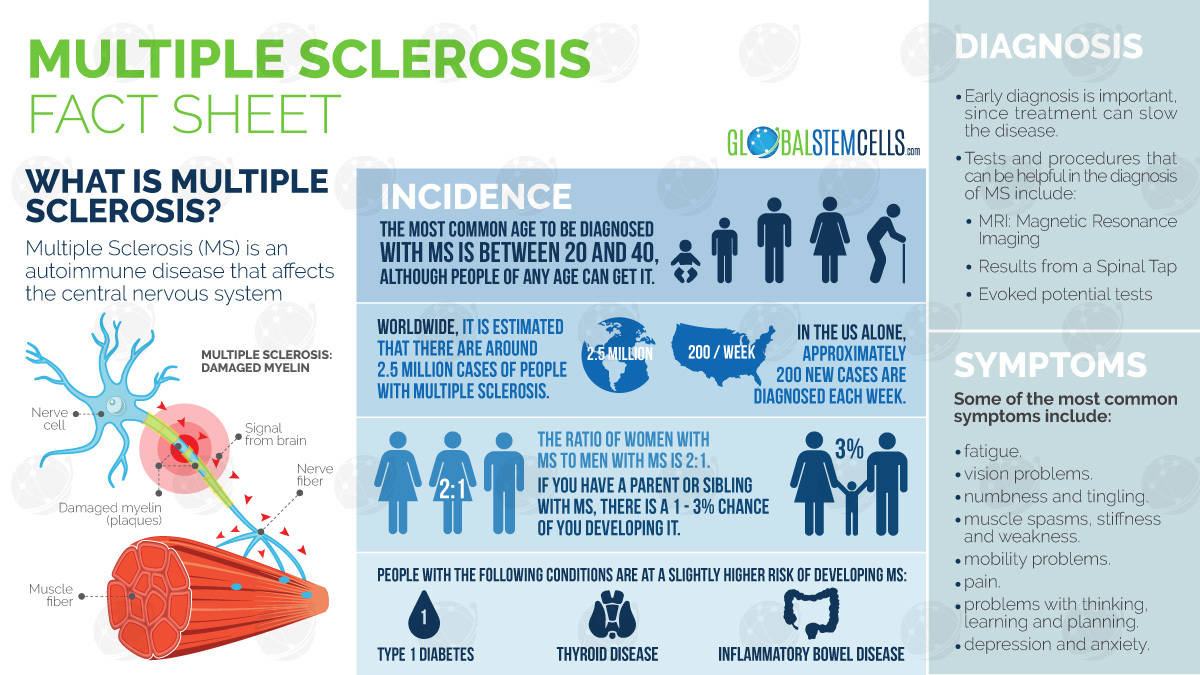What is Multiple Sclerosis?
Multiple sclerosis (MS) is a chronic, often disabling disease that attacks the central nervous system (CNS), which is made up of the brain, spinal cord and optic nerves. Symptoms may be mild, such as numbness in the limbs, or severe, such as paralysis or loss of vision. The progress, severity and specific symptoms of MS are unpredictable and vary from one person to another. Today, new treatments and advances in research are giving new hope to people affected by the disease.
MS Thought to be an Autoimmune Disease
In a person with MS, the body’s own defense system attacks myelin, the fatty substance that surrounds and protects the nerve fibers in the central nervous system. The nerve fibers themselves can also be damaged. The damaged myelin forms scar tissue (sclerosis), which gives the disease its name. When any part of the myelin sheath or nerve fiber is damaged or destroyed, nerve impulses traveling to and from the brain and spinal cord are distorted or interrupted, producing the variety of symptoms that can occur.
Most people with MS learn to cope with the disease and continue to lead satisfying, productive lives.
The Four Courses of MS
People with MS can typically experience one of four disease courses, each of which might be mild, moderate or severe.
- Relapsing-Remitting MS: People with this type of MS experience clearly defined attacks of worsening neurologic function. These attacks, which are called relapses, flare-ups or exacerbations, are followed by partial or complete recovery periods (remissions), during which no disease progression occurs. About 85 percent of initial diagnoses are relapsing-remitting MS.
- Primary-Progressive MS: This disease course is characterized by slowly worsening neurologic function from the beginning with no distinct relapses or remissions. The rate of progression may vary over time, with occasional plateaus and temporary minor improvements. About 10 percent of diagnoses are primary-progressive MS.
- Secondary-Progressive MS: Following an initial period of relapsing-remitting MS, many people develop a secondary-progressive disease course in which the disease worsens more steadily, with or without occasional flare-ups, minor recoveries (remissions) or plateaus. Before disease-modifying medications became available, about 50 percent of people with relapsing-remitting MS developed this form of the disease within 10 years. Long-term data are not yet available to determine if treatment significantly delays this transition.
- Progressive-Relapsing MS: In this relatively rare course of MS (5 percent of cases), people experience steadily worsening disease from the beginning, with clear attacks of worsening neurologic function along the way. They may or may not experience some recovery following these relapses, but the disease continues to progress without remissions.
Because no two people have exactly the same experience with MS, the disease course may look very different from one person to another. And it may not always be clear to the physician, at least at first, which course a person is experiencing.





